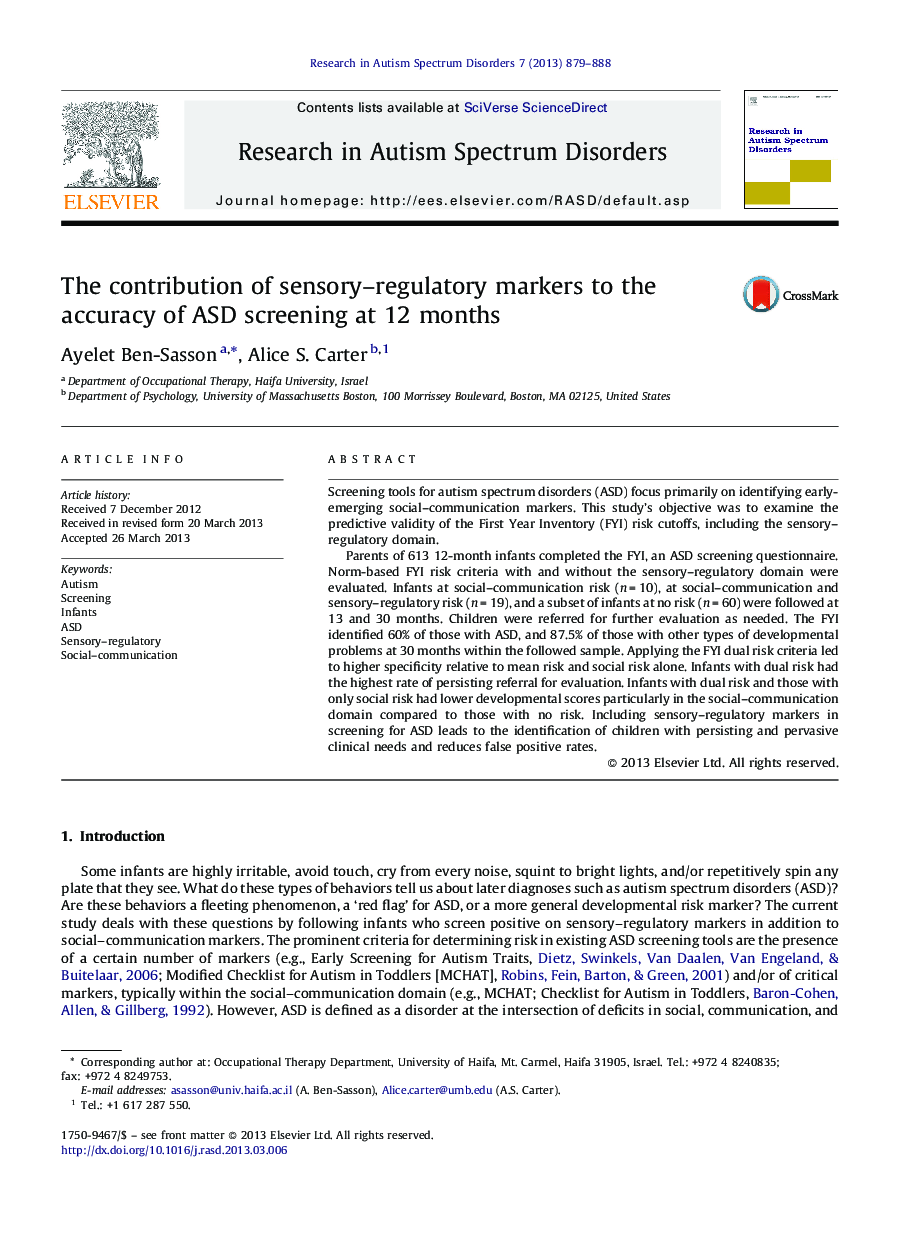| کد مقاله | کد نشریه | سال انتشار | مقاله انگلیسی | نسخه تمام متن |
|---|---|---|---|---|
| 370393 | 621862 | 2013 | 10 صفحه PDF | دانلود رایگان |

• We compared different ASD screening risk criteria relative to social–communication assessment and diagnostic outcomes at follow-up.
• Including sensory markers in risk criteria led to higher specificity rates.
• Infants with social and sensory markers had persisting developmental concerns.
• ASD screening identified children who have poor social–communication development.
Screening tools for autism spectrum disorders (ASD) focus primarily on identifying early-emerging social–communication markers. This study's objective was to examine the predictive validity of the First Year Inventory (FYI) risk cutoffs, including the sensory–regulatory domain.Parents of 613 12-month infants completed the FYI, an ASD screening questionnaire. Norm-based FYI risk criteria with and without the sensory–regulatory domain were evaluated. Infants at social–communication risk (n = 10), at social–communication and sensory–regulatory risk (n = 19), and a subset of infants at no risk (n = 60) were followed at 13 and 30 months. Children were referred for further evaluation as needed. The FYI identified 60% of those with ASD, and 87.5% of those with other types of developmental problems at 30 months within the followed sample. Applying the FYI dual risk criteria led to higher specificity relative to mean risk and social risk alone. Infants with dual risk had the highest rate of persisting referral for evaluation. Infants with dual risk and those with only social risk had lower developmental scores particularly in the social–communication domain compared to those with no risk. Including sensory–regulatory markers in screening for ASD leads to the identification of children with persisting and pervasive clinical needs and reduces false positive rates.
Journal: Research in Autism Spectrum Disorders - Volume 7, Issue 7, July 2013, Pages 879–888